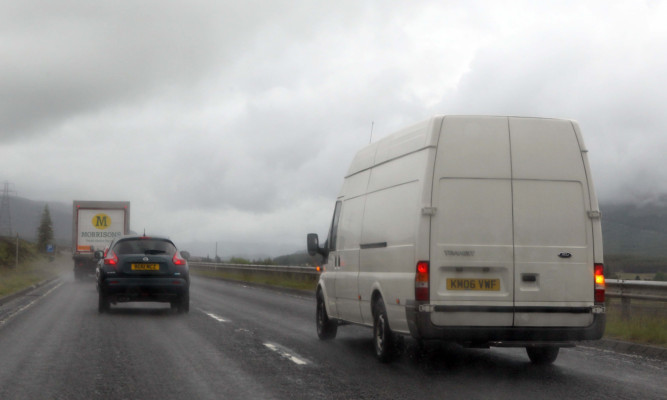A new average speed camera system, which will run from Dunblane to Inverness, to be installed on the A9 in a bid to bring about “immediate improvements” to safety.
Transport Minister Keith Brown announced the move when he visited Blackford, one of the areas that the massive 136-mile scheme will cover. He said it will improve safety while longer term work to dual the route continues.
Transport Scotland says the decision to introduce the system follows a review of evidence as well as careful consideration of the views of members of the A9 Safety Group over the last year.
The A9 system will be the second in Scotland but by far the longest. The first was installed on a 27-mile stretch of the A77 in Ayrshire between Bogend Toll and Ardwell Bay in 2005. Since then it has been credited with delivering a 46% reduction in fatal accidents and 35% reduction in serious accidents.
Officials say the camera system will back up a number of other safety measures that have been introduced on the A9, including new and more consistent signs and lines, safety barrier and variable messaging signs displaying journey times.
Mr Brown said:“The A9 is one of Scotland’s most important routes, linking Inverness to the rest of the country, and it is extremely important that it is as safe as possible for all road users.
“The A9 Safety Group has recommended that an average speed camera system is introduced to help cut down on the number of accidents and Transport Scotland will now take this forward.Editor’s link: How do average speed cameras work?“While the Scottish Government believes that dualling will be the long-term solution to the safety issues on the A9 we are the first administration committed to making the road dual carriageway all the way from Perth to Inverness a reality we also want to make the immediate improvements that will bring positive changes to driver behaviour.
“Average speed cameras systems have a proven track record of reducing casualties and excessive speed and their high visibility leads to better compliance of the speed limit.We hope to see the first of the cameras introduced early next year and expect the system to be fully operational in the Summer of 2014.”
Superintendent Iain Murray from Police Scotland said:“Police Scotland is committed to making Scotland’s roads safer and any initiative that furthers that aim is welcome. Average speed cameras have previously proved their ability to reduce casualties on other major roads in Scotland and analysis shows that there will be similar benefits on the A9.
“There is no doubt that this announcement will help to reduce the concerns of a great many people who have made their concerns about safety on the road known in recent days. However, it is clear that the introduction of the system will take some time.
“I would therefore wish to reassure all road users that in the meantime the Trunk Roads Patrol Group will continue to provide a higher level of patrols on the A9, as well as other strategic routes in Scotland, to influence road user behaviour, encourage better driving and enforce legislation when required.”
The Institute of Advanced Motorists has previously expressed scepticism about the worth of more cameras on the A9.
Policy and research director Neil Greig said: ”Many of the crashes are due to misjudged overtaking manoeuvres and problems at junctions rather than out-and-out speeding.”
He contended that the money might be better channelled into providing better overtaking opportunities and extra police patrols. At the moment surveillance of the road is maintained by mobile camera vans and police cars.
But Road Safety Scotland director Michael McDonnell said:“The A9 Safety Group’s objective is to positively influence driver behaviours in a way that helps reduce road casualty figures.It has been demonstrated in other locations that average speed cameras reduce the number of people being killed and seriously injured and this offers real potential to improve safety on the A9 ahead of the dualling programme.”
Earlier this week Professor Donald Macleod, former principal of Free Church College in Edinburgh, said upgrading the “notorious” road to dual carriageway should be a national priority for the Scottish Government.
He claimed that the number of people killed on the A9 was a “shame to the nation”.
Earlier this month three people, including a woman and her young daughter, were killed in a two-car crash on the A9 near Kingussie in the Highlands.
Abigail Houston, 42, and seven-year-old Mia, from the Trinity area of Edinburgh, died in the crash which also claimed the life of Dr Mohammad Ali Hayajneh from Duisberg in Germany.
Most of the A9 is single carriageway, with the Scottish Government planning to convert it to dual carriageway by 2025. The £3 billion project would see 80 miles of the road upgraded.
